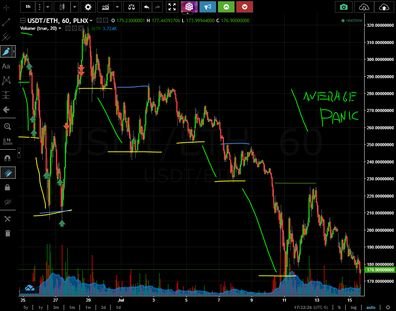Someone could please draw a base for me in this chart to explain? So I can see clearly and that's a great help also. I highly appriciate that..
You are viewing a single comment's thread from:
Someone could please draw a base for me in this chart to explain? So I can see clearly and that's a great help also. I highly appriciate that..
You measure a power of base by looking how big its a bounce from this point/base. If its huge almost straight green bounce it's a base. If the chart bounce a few small ones from line of this base, its weakening this base.
This is Luc's explanation.

Where did Luc say that bouncing multiple times on a base (or multiple small ones) weakens the base? I thought bouncing multiple times on a base meant that the base was getting stronger?
In one of videos Luc mentioned something like that. I am paraphrasing. "Here was a base, but chart had here a few little bounces(before crosing base) so it isnt so strong now."
@quickfingersluc correct me please if I'm wrong.
Late response - but this is when it helps to understand the reason 'why' Lucs method works, beyond just looking at the chart patterns.
The reason we are looking for cracks of the base, is because the buyers who supported that price are completely caught by surprise.
Keyword here being surprise.
Because of this surprise, those previous buyers now turn into panicking sellers, and dump their positions at unreasonable prices. These unreasonable prices then get bought up by the big guys (who we try and buy alongside with) who then drive the price back up to the cracked base.
The problem with price consolidation off a base - people begin to start expecting a big breakout or drop. Doesn't matter which direction - what does matter is people are expecting something soon.
So with consolidation, there's not nearly as much surprise.
If it's a good chart, you should still get a bounce, but it'll be weak and may not fully return to the base.
This is also why buying "slow grinds" don't really adhere to Lucs method either.
Even if a slow grind 'cracks' a base, nobody will be surprised by it.
The greater the market is surprised, the bigger the overreaction (and panic) will be, which both makes the trade safer and more profitable.